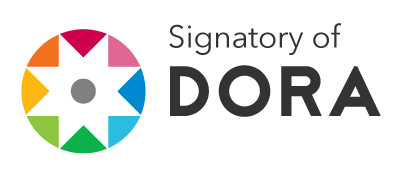Fire effects on the ant community in areas of native and exotic vegetation
DOI:
https://doi.org/10.13102/sociobiology.v66i1.3178Keywords:
Invasive species, restoration, grassland, fireAbstract
Acacia melanoxylon is an invasive species of the mountain grassland of the southeastern part of the Buenos Aires province, Argentina. Fires are a natural disturbance, characteristic of the area, and favor the germination of this invasive plant. However, they are used as the first step in management systems for the Acacia species. Moreover, the use of ants in monitoring programs is very scarce for Argentina. The objectives of this work are: 1) to analyze the response and resilience capacity of native and invaded sites by A. melanoxylon after a fire for controlling this invasive species; 2) to detect groups of ants considered to be indicators of the recovery phase subsequent to the burning; and 3) to apply the concept of groups of disturbances, proposed by Roig and Espadaler, as an effective tool for monitoring. The sampling design consisted of three replicates of 10 pitfall traps for each environment, native and invaded. Ant species were grouped into functional groups, trophic guilds, and disturbance groups. The fire did not generate significant changes in the richness and abundance of ants in the mountain grassland. However, it generated a positive effect on the sites invaded by Acacia during the first year after the fire. The groups of minimum specialists of vegetation and the dominant Dolichoderinae are considered good bioindicators. Finally, the disturbance indicators can be considered reliable management tools if the biology of the species that compose it is known beforehand.
Downloads
References
Agosti, D.; Majer, J. D.; Alonso, L. E. & Schultz, T. R. (2000). Ants: Standar methods for measuring and monitoring biodiversity. Washington, Biological Diversity Handbook Series, Smithsonian Institution Press, 280p.
Alonso, L. E. (2000). Ants as indicator of diversity. In: Agosti, D.; Majer, J. D.; Alonso, L. E. & Schultz, T. R. (eds.). Ants: Standar methods for measuring and monitoring biodiversity (pp. 80-88). Washington, Biological Diversity Handbook Series, Smithsonian Institution Press, 280p.
Andersen, A. N. (1991). Responses of ground-foraging ant communities to three experimental fire regimes in a savanna forest of tropical Australia. Biotropica, 23: 85-575. doi: 10.2307/2388395
Andersen A. N. (1995). A classification of Australian ant communities, based on functional groups wich parallel plant life-forms in relation to stress and disturbance. Journal of Biogeography 22: 15-29. doi: 10.2307/2846070
Andersen, A. N. (1997). Functional groups and patterns of organization in North America ant communities: a comparision with Australia. Journal of Biogeography, 24: 433-460. doi: 10.1111/j.1365-2699.1997.00137.x
Andersen, A. N. (1999). My bioindicator or yours? Making the selection. Journal of Insects Conservation 3: 4-61. doi: 10.1023/A:1017202329114
Andersen, A. N. & Majer, J. D. (2004). Ants show the way down under: invertebrates as bioindicators in land management. Frontiers in Ecology and the Environment, 2: 291-298. doi: 10.2307/3868404
Anjos, D.; Campos, R.; Campos, R. & Ribeiro, S. (2017). Monitoring Effect of Fire on Ant Assemblages in Brazilian Rupestrian Grasslands: Contrasting Effects on Ground and Arboreal Fauna. Insects, 8: 64. doi: 10.3390/insects8030064
Arcusa, J. (2016). Efecto de un incendio sobre el ensamble de hormigas de la Reserva Natural Privada Paititi, Provincia de Buenos Aires, Argentina. Revista de la Sociedad Entomológica Argentina, 75: 127-134
Bilenca, D & Miñarro, F. (2004). Áreas Valiosas de Pastizal (AVPs) en pampas y campos. Fundación Vida Silvestre, Buenos Aires, 353 p.
Brown, K. S. Jr. (1997). Diversity, disturbance, and sustainable use of Neotropical forest: Insects as indicator for conservation monitoring. Journal of Insect Conservation, 1: 25-42. doi: 10.1023/A:1018422807610
Costa, C. B.; Ribeiro, S. P. & Castro, P. (2010). Ants as bioindicators of natural succession in savanna and riparian vegetation impacted by dredging in the Jaquitinhonha river Basi, Brazil. Restoration Ecology, 18: 148-157. doi: 10.11 11/j.1526-100X.2009.00643.x
Fagundes, R.; Anjos, D. V.; Carvalho, R. & Del-Claro, K. (2015). Availability of food and nesting-sites as regulatory mechanisms for the recovery of ant diversity after fire disturbance. Sociobiology, 62: 1-9. doi: 10.13102/sociobiology.v62:1-9
Folgarait, P. J. (1998). Ant biodiversity and its relationship to ecosystem functioning: a review. Biodiversity and Conservation, 7: 1221-1244.
Fuster, A. (2014). Hormigas (Hymenoptera: Formicidae) indicadoras de perturbación en un ecosistema forestal en el Chaco semiárido Argentino. Facultad de Ciencias Forestales “Nestor René Ledesma”. Universidad Nacional de Santiago del Estero.
Gaspari, F.J. (2007). Plan de ordenamiento territorial en cuencas serranas degradadas utilizando sistemas de información geográfica (S.I.G). Tesis de Maestría Conservación y Gestión del Medio Natural. Integración de Sistemas Naturales y Humano. Universidad Internacional de Andalucía sede iberoamericana Santa María de la Rábida.
Gibson, M. R.; Richardson, D. M.; Marchante, E.; Marchante, H.; Rodger, J. G.; Stone, G. N.; Byrne, M.; Fuentes-Ramírez, A. ; George, N.; Harris, C.; Johnson, S. D.; Le Roux, J. J.; Miller, J. T.; Murphy, D. J.; Pauw, A.; Prescott, M. N.; Wandrag, E. M. & Wilson, J. R. U. (2011). Reproductive biology of Australian acacias: important mediator of invasiveness?. Diversity and Distributions, 17: 911–933. doi: 10.1111/j.1472-4642.2011.00808.x
Greenslade, P. J. M. & Greenslade, P. (1984). Invertebrates and environmental assessment. Environmental Planning, 3: 5-13.
Guazzelli, M. A. (1999). Efectos del fuego sobre la fauna y los caracteres fisicoquímicos del suelo en las sierras septentrionales de la Provincia de Buenos Aires. Tesina de grado, Facultad de Cs. Exactas y Naturales, Universidad Nacional de Mar del Plata.
Kaspari, M. & Majer, J. D. (2000). Using ants to monitor enviromental change. In: Agosti, D.; Majer, J. D.; Alonso, L. E. & Schultz, T. R. (eds.). Ants: Standar methods for measuring and monitoring biodiversity. Washington, Biological Diversity Handbook Series, Smithsonian Institution Press, 280p.
King, J. R.; Andersen, A. N. & Cutter, A. D. (1998). Ants as bioindicator of habitat disturbance: validation of the functional group model for Austria’s humid tropics. Biodiversity and Conservation, 7: 1627-1638. doi: 10.1023/A:1008857214743
Kusnezov, N. (1951). El Género Camponotus en la Argentina (Hymenoptera: Formicidae). Acta Zoologica Lilloana, XII: 183-252.
Le Maitre, D. C.; Gaertner, M.; Marchante, E.; Ens, E.; Holmes, P. M.; Pauchard, A.; O’Farrell, P. J.; Rogers, A. M.; Blanchard, R.; Blignaut, J. & Richardson, D. M. (2011). Impacts of invasive Australian acacias: implications for management and restoration. Diversity and Distributions, 17: 1015–1029. doi: 10.1111/j.1472-4642.2011.00816.x
Maravalhas, J. & Vasconcelos, H. L. (2014). Revisiting the pyrodiversity–biodiversity hypothesis: long-term fire regimes and the structure of ant communities in a Neotropical savanna hotspot. Journal of Applied Ecology, 51: 1661–1668. doi: 10.1111/1365-2664.12338
McGeoch, M. A. (1998). The selection, testing and application of terrestrial insects as bioindicators. Biological Reviews, 73: 181-201. doi: 10.1111/j.1469-185X.1997.tb00029.x
Neves, F. S.; Lana, T. C.; Anjos, M. C.; Reis, A. C. & Fernandes G. W. (2017). Ant Community in Burned and Unburned Sites in Campos Rupestres Ecosystem. Sociobiology, 63: 628-636. doi: 10.13102/sociobiology.v63i1.779
Patanita, M. I.; Gonçalves, C.; Roig, X.; Pereira, J. A. & Santos, S. A. (2012). Aplicación de la nueva propuesta de grupos funcionales de hormigas para Penísnsula Ibérica e Islas Baleares en olivares de Alentejo (Portugal). Iberomyrmex, 4: 14-15.
Peck, S. L.; McQuaid, B. & Campbell, C. L. (1998). Using ant species (Hymenoptera: Formicidae) as a biological indicator of agroecosystem condition. Enviromental Entomology, 27: 1102-1110. doi: 10.1093/ee/27.5.1102
Roig, X. & Espadaler, X. (2010). Proposal of functional groups of ants for the Iberian Peninsula and Balearic Islands, and their use as bioindicator. Iberomyrmex, 2: 28-29.
Rosenberg, D. M.; Danks, H. V. & Lehmkuhl, D. M. (1986). Importance of insects in enviromental impact assessment. Environmental Management, 10: 83-773. 10.1007/BF01867730
Rossel, P. & García Martínez, B. (2008). Comportamiento hidrológico de la cuenca alta del arroyo Pigüé (Buenos Aires, Argentina): balance hídrico (1964-2007). Investigaciones Geográficas, 47: 159-174. doi: 10.14198/INGEO2008.47.09
Silvestre, R.; Brandão, C. R. F. & Rosa da Silva, R. (2003). Grupos funcionales de hormigas: el caso de los gremios del Cerrado. En: Fernandez, F. (ed.). Introducción a las hormigas de la región neotropical. Instituto de investigación de recursos biológicos Alexander Von Humboldt, Bogotá, Colombia. 398p.
Tizón, F. R.; Pelaéz, D. V. & Elía, O. R. (2010). Efecto de los cortafuegos sobre el ensamble de hormigas (Hymenoptera: Formicidae) en una región semiárida Argentina. Iheringia, 100: 216-221. doi: 10.1590/S0073-47212010000300005
Villalba, V.; Fernanda, I.; Sgarbi, C.A.; Culebra Mason, S. & Ricci, M. E. (2014). Grupos funcionales dominantes de hormigas (Hymenóptera: Formicidae) es pastizales naturales con y sin pastoreo del noreste de Buenos Aires, Argentina. Revista de la Facultad de Agronomía, 113: 107-113.
Downloads
Published
How to Cite
Issue
Section
License
Sociobiology is a diamond open access journal which means that all content is freely available without charge to the user or his/her institution. Users are allowed to read, download, copy, distribute, print, search, or link to the full texts of the articles in this journal without asking prior permission from the publisher or the author. This is in accordance with the BOAI definition of open access.
Authors who publish with this journal agree to the following terms:
- Authors retain copyright and grant the journal right of first publication with the work simultaneously licensed under a Creative Commons Attribution License that allows others to share the work with an acknowledgement of the work's authorship and initial publication in this journal.
- Authors are able to enter into separate, additional contractual arrangements for the non-exclusive distribution of the journal's published version of the work (e.g., post it to an institutional repository or publish it in a book), with an acknowledgement of its initial publication in this journal.
- Authors are permitted and encouraged to post their work online (e.g., in institutional repositories or on their website) prior to and during the submission process, as it can lead to productive exchanges, as well as earlier and greater citation of published work (See The Effect of Open Access).



 eISSN 2447-8067
eISSN 2447-8067










